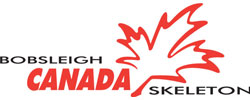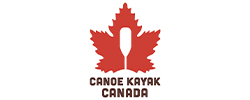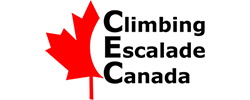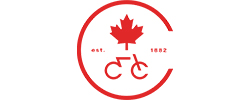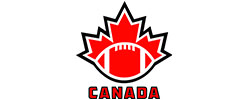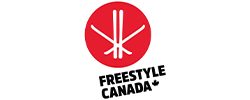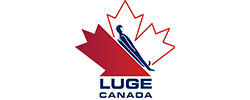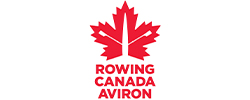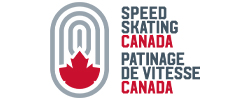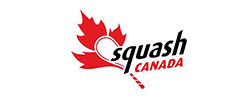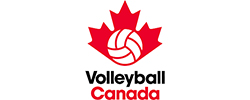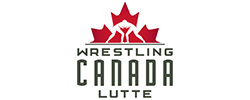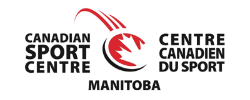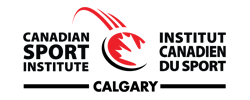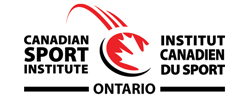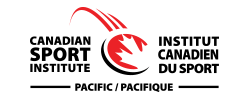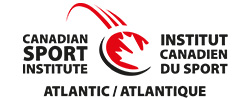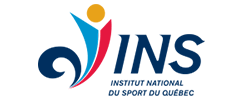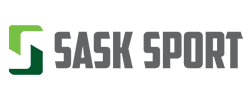Leaders
Strength Test
male Athletes
| 14-18
8 Athletes
Score: 300
All Time Leader (Multi)
female Athletes
| 14-18
Macy M
Score: 300
All Time Leader (2023)
male Athletes
| 19+
21 Athletes
Score: 300
All Time Leader (Multi)
female Athletes
| 19+
Bailey E.
Score: 244
All Time Leader (2018)
Leaders
Running Sprint
male Athletes
| 14-18
Jordan S.
Score: 3.74
All Time Leader (2019)
female Athletes
| 14-18
Blaire C.
Score: 4.09
Edmonton
male Athletes
| 19+
Jerome B. (Olympian)
Score: 3.72
All Time Leader (2017)
female Athletes
| 19+
Maoly S-G
Score: 4.06
Sherbrooke
Leaders
Vertical Jump
male Athletes
| 14-18
Kevin S.
Score: 106.8
All Time Leader (2022)
female Athletes
| 14-18
Kaiya H.
Score: 80.1
All Time Leader (2023)
male Athletes
| 19+
Dennis C.
Score: 109.1
All Time Leader (2017)
female Athletes
| 19+
Paige B.
Score: 89.9
All Time Leader (2022)
Leaders
Shuttle Run
male Athletes
| 14-18
Joshua Z.
Score: 16.03
All Time Leader (2017)
female Athletes
| 14-18
Brooke M.
Score: 13.04
All Time Leader (2017)
male Athletes
| 19+
Luc M.
Score: 14.05
Victoria
female Athletes
| 19+
Stephanie T.
Score: 13.07
All Time Leader (2018)
See this year's
top athletes
About
What is RBC Training Ground?
RBC Training Ground is a talent identification and athlete funding program designed to find young athletes with Olympic potential, and provide them with the resources they need to achieve their podium dreams.
With the belief that high performance sports should be accessible to all athletes that are talented, qualified and have the will to compete, this program travels the country searching for athletes between the ages of 14 and 25 that will fuel the Canadian Olympic pipeline.
Introducing the 2023 RBC Future Olympians
We are proud to officially announce our roster of 30 RBC Future Olympians, who will receive access to top coaches, funding, and mentorship as they strive to turn their Olympic dreams into reality over the coming years. Congratulations!
Testing
Athletes are assessed using basic tests that indicate speed, strength, power and endurance capabilities.
National Sport Organizations (NSO’s) use combinations of these test results to identify skills that may translate to strong potential in their respective sport. Each sport requires different physical abilities and skills, and therefore performance benchmarks vary by NSO. Field based assessment results must be viewed within the context of the requirements of the sport, the characteristics of the athlete, and the stage of their development.
Sign up for free and compete an event near you.
Download PDF for virtual testing instructions.
Download PDF for virtual testing instructions.
Download PDF for virtual testing instructions.
Learn More
Why is the age range 14 to 25 years?
The age range of 14 to 25 years aligns with long-term athlete development stages and the Canadian Sport for Life program. This age range allows us to capture those with early and late-stage Olympic potential. The probability of identifying an athlete below or above these age ranges, within our current RBC Training Ground partner sports, is very small.
Can non-Canadian athletes participate in RBC Training Ground Events?
Any athlete aged between 14-25 years old can participate in an RBC Training Ground Qualifying event, regardless of citizenship status or permanent residency. However, non-Canadian athletes are not eligible to participate in the RBC Training Ground National Final event and are not eligible for recruitment and to be matched with a National Sport Organization.
RBC Training Ground Qualifying events take place across Canada and provide athletes with the opportunity to network with peers, RBC Olympians, and coaches onsite. Athletes will also receive a custom scorecard after they participate, which will help them compare their physical performance against our benchmarks, and potentially identify a new sport they excel in.
Why aren’t non-Canadians eligible to be recruited and matched with a National Sport Organization or attend the National Final?
How do I/does my child compare against the performance benchmarks?
Each sport requires different skills and physical abilities with performance benchmarks that are dictated by our National Sport Organization partners, taking age and gender into account. Athletes that participate in RBC Training Ground will receive a custom scorecard after they participate, which will help them compare their physical performance against our benchmarks.
How many athletes are tested?
How do I/does my child participate?
Anyone aged 14-25 (on the date they try out) can participate by signing up for a local qualifying event.
Participants must first register with their basic information online, complete a more detailed Athlete Profile, and select the event they wish to attend.
By attending events in-person, athletes will also be able to meet RBC Olympians, chat with on-site NSO representatives and meet fellow elite athletes. However, if an athlete cannot compete in-person due to a scheduling conflict they may participate in the virtual qualifying option for a chance to be considered. Regardless of the testing format an athlete participates in (in-person or virtual), results will be weighed equally.
Sign up today!
Which sports are recruiting new athletes through RBC Training Ground?
There are 13 National Sport Organizations (NSO) recruiting athletes through RBC Training Ground in 2024:
- Bobsleigh Canada Skeleton
- Canoe Kayak Canada
- Climbing Canada
- Cycling Canada
- Football (Flag) Canada
- Freestyle Canada
- Luge Canada
- Rowing Canada
- Rugby Canada
- Speed Skating Canada
- Squash Canada
- Volleyball Canada
- Wrestling Canada
Does RBC Training Ground visit all provinces and major cities across the country?
RBC Training Ground is committed to giving athletes across Canada the opportunity to participate, knowing there may be undiscovered and talented athletes around the country. Qualifying event cities are chosen to give in-person testing opportunities to as many Canadian athletes as possible. However, we recognize there are still a number of factors that may limit an athlete’s ability to attend one of the events, which is why we’re proud to be offering a virtual testing option as a safe, accessible, equally-as-credible alternative option once again.
How are athletes selected to attend the RBC Training Ground National Final?
Coaches and talent identification representatives from the participating NSOs will select athletes based on a combination of athlete performances – qualifying event or virtual testing results – sport history, and second-phase testing sessions. NSOs are looking for athletes who met or exceeded the predetermined benchmarks set by each of the sports.
What is the National Final?
Based on the results of RBC Training Ground qualifying (and virtual) testing, and the subsequent sport-specific testing, 100 of the top athletes as nominated by our NSO partners will be invited to the National Final. This all-expense paid trip will represent the final stage of testing prior to selection of RBC ‘Future Olympians’ – the top 30 athletes who are chosen for continued support through the program.
This event will take place again in the fall of 2024, stay tuned for more information.
What happens after the National Final?
The RBC Training Ground team will reach out to all athletes who attend the National Final with more information after the event. 30 athletes from across the country will be selected as RBC ‘Future Olympians’. The athlete’s NSO will receive funding assistance that will be used towards each RBC Future Olympian’s travel, competition, training camp expenses, coaching, nutrition, and other sport-related costs, at the sole discretion of the NSO. These funds will be administered by the Canadian Olympic Foundation to the applicable NSO directly.
Is RBC Training Ground open to Para athletes?
At this time, we are focused on finding the next generation of athletes with Olympic potential. Para sport has different requirements for their athletes based on the different classifications and ability categories within each discipline.
How has RBC committed to fueling the Olympic movement in Canada?
The Olympic Games represent excellence, teamwork, diversity and commitment —the same values that hold true for RBC, its employees, clients and communities. That connection is a major reason why RBC has been Team Canada’s longest-standing corporate partner since 1947. This commitment to the Olympic movement is demonstrated through the RBC Olympians program, as well as through RBC’s support for the next generation of Olympic hopefuls.
How does virtual qualifying work?
After registering for RBC Training Ground, athletes can select “Virtual Testing” from the drop-down list of RBC Training Ground events. Upon completion of their Athlete Bio, they will receive detailed instructions for how to complete our athletic tests remotely using minimal equipment. Exercises include a Shuttle Run, Sprint Test and Vertical Jump. Test scores will be submitted to the athlete’s profile along with a video recording as proof of completion. For more information, please contact RBC Training Ground.
What happens after I compete virtually or at a qualifying event?
After your event, your results will be evaluated by our participating NSOs and you may be invited to complete second-phase testing with one, or more, of the sports. This phase of testing will look different depending on which sports are interested in your abilities, and may require you to travel to a location outside of your city of residence or where you competed in the qualifying phase.
2024 Partnering National Sport Organizations
Providing second phase sport-specific testing to the selected athletes.
Canadian Olympic and Paralympic Sport Institute / Sport Centre Network
Serving as the official testing facilitation partner for RBC Training Ground across Canada.


